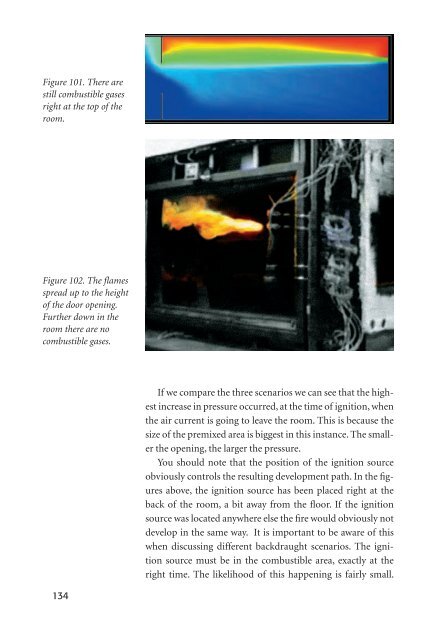You also want an ePaper? Increase the reach of your titles
YUMPU automatically turns print PDFs into web optimized ePapers that Google loves.
Figure 101. There are<br />
still combustible gases<br />
right at the top of the<br />
room.<br />
Figure 102. The fl ames<br />
spread up to the height<br />
of the door opening.<br />
Further down in the<br />
room there are no<br />
combustible gases.<br />
134<br />
If we compare the three scenarios we can see that the highest<br />
increase in pressure occurred, at the time of ignition, when<br />
the air current is going to leave the room. This is because the<br />
size of the premixed area is biggest in this instance. The smaller<br />
the opening, the larger the pressure.<br />
You should note that the position of the ignition source<br />
obviously controls the resulting development path. In the fi gures<br />
above, the ignition source has been placed right at the<br />
back of the room, a bit away from the fl oor. If the ignition<br />
source was located anywhere else the fi re would obviously not<br />
develop in the same way. It is important to be aware of this<br />
when discussing different backdraught scenarios. The ignition<br />
source must be in the combustible area, exactly at the<br />
right time. The likelihood of this happening is fairly small.

















